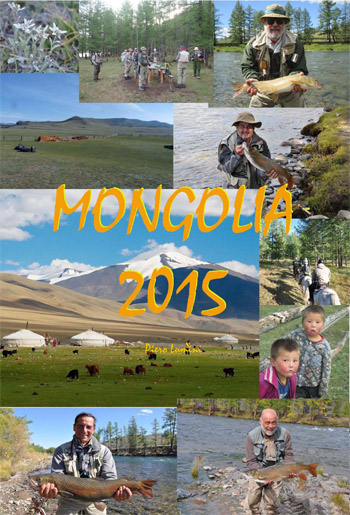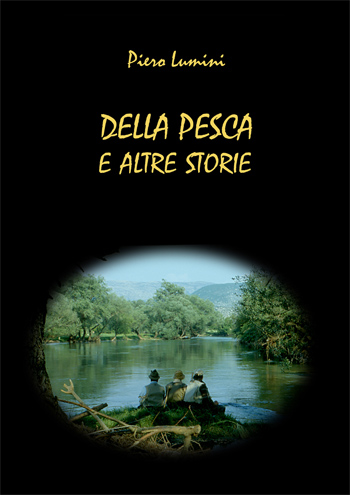febbraio-marzo 2016
Sommario
COSTRUZIONE MOSCA
KLINKHÅMER SPECIAL
di Hans van Klinken
La traduzione integrale della più completa e aggiornata guida alla Klinkhåmer. Tutte le fasi di montaggio, tutti gli aspetti costruttivi – materiali, tecniche, varianti – per chiarire in modo definitivo storia, errori e fraintendimenti che la riguardano.
TECNICA SPINNING
LIPLESS E TROTE IN LAGHETTO
di Renzo Della Valle
I minnow senza paletta si sono guadagnati la fiducia dei pescatori prima nella pesca ai cavedani di lago e fiume, poi nei laghetti per la trota iridea, dove hanno conosciuto una seconda giovinezza e oggi rappresentano una valida alternativa alle esche metalliche.
TECNICA MOSCA
I SEGRETI DELLE CODE
di Armando Quazzo
A confronto, in un’intervista ragionata, le opinioni dei progettisti delle maggiori aziende produttrici di code, interrogati su tradizione e innovazione, differenze fra diverse tipologie di materiali, asole termosaldate, anime a ridotto allungamento, prospettive future.
TECNICA SPINNING
FOSS FISHING INVERNALE
di T2 Tribe
In giro per fossi e canaletti alla ricerca di carpe e carassi, ma anche di breme, scardole, cefali, pesci gatto di varie specie: il foss fishing è sempre in grado di dare qualche soddisfazione, anche nella stagione più fredda dell’anno. Attrezzature e artificiali.
ITINERARIO MOSCA E SPINNING
TRIGGERFISH PARADISE
di Boris M. Salnicoff
Tutti i consigli necessari per pescare a mosca il triggerfish – delle specie yellowmargin e titan – nel Mar Rosso sudanese, meta che consente di avvistare molti più esemplari rispetto ad altri luoghi, insieme naturalmente a varie altre prede, anche per gli amanti dello spinning.
TECNICA SPINNING
MAGICA GOMMA
di Giorgio Montagna
«Quando i ‘veloci’ minnow affondanti, o i cucchiai rotanti richiamati a regola d’arte ma pur sempre troppo ‘rapidi’, o gli amati ondulanti falliscono, l’impiego di esche di gomma richiamate lentamente e con rilasci e ripartenze accattivanti può portare alla cattura sospirata da tempo».
COSTRUZIONE MOSCA
ITALIAN STYLE. PLECOTTERI
di Fabio Federighi
Terza parte della serie dedicata dall’autore alle varie tipologie di insetti imitabili con la tecnica costruttiva che si rifà alla grande lezione di Francesco Palù, tendente a dare movimento e parvenza di vita alle proprie creazioni grazie a una scelta e a un impiego particolari dei vari materiali.
TECNICA SPINNING
IL LUCCIO CHE NON TI ASPETTI
di Riccardo Tamburini e Luca Dal Cer
Più spesso di quanto si immagini, artificiali espressamente concepiti per la cattura del black bass vengono golosamente appetiti dal luccio. Ecco le diverse esperienze, con varie tipologie di artificiali, di due esperti pescatori. Con qualche tentativo ermeneutico.
ITINERARIO MOSCA
ALTO CHIESE
di Matteo Menghini
«Fiume rapido e profondo che scaturisce dai monti del Tirolo, e che serpeggiando fra le gole, ora più largo ora più angusto, a volte diritto per qualche miglio, tal’altra volta a sghimbescio e a zig zag come fossero le lucide spire di un gigantesco serpente, veniva giù per un lunghissimo tratto di campagna».
TECNICA SPINNING MARE
SPIGOLE E SOFT SHAD
di Francesco Paolini
L’impiego delle esche siliconiche per la cattura della spigola ha segnato l’inizio di una nuova epoca. I soft shad rappresentano la categoria più adatta per questa pesca, sia nelle diverse versioni tradizionali, sia nell’evoluzione rappresentata dal Pendolino System Rig.
COSTRUZIONE MOSCA
POLIPROPILENE IN FIBRA - seconda parte
di Ivano Mongatti
Vediamo questa volta l’impiego delle fibre di polipropilene per la costruzione di artificiali adatti alla pesca saltwater. Dalle realizzazioni più semplici a Surf Candy, Clouser, montaggi in asola. Con consigli sulla finitura e sulle colle.
AUTOCOSTRUZIONE
EGI
di Moreno Bartoli
Grande partecipazione dei lettori al Contest sugli egi, che temevamo invece poco frequentato: undici modelli in legno o resina, con o senza finitura in tessuto competono sulle pagine che seguono le fasi di montaggio dell’egi proposto dal maestro Moreno Bartoli.





























